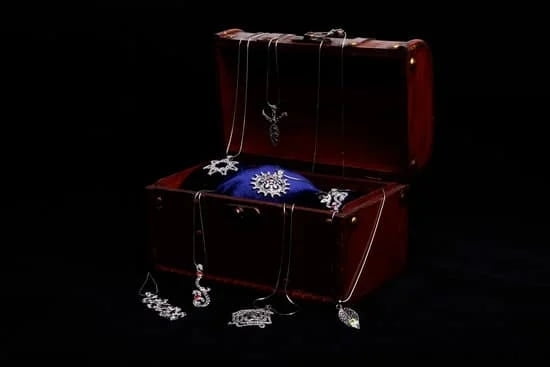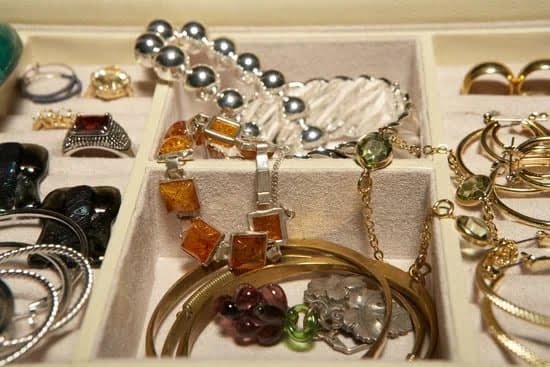Introduction
Annealing brass for jewelry can provide many benefits, especially for those who are looking to create one-of-a-kind pieces. Annealing softens the material and allows it to be reshaped and manipulated with ease. This process is also used to work-harden items, making them more durable and resistant to wear or other damage. In addition, annealing can help ensure that your piece has a long life span due to its improved strength and flexibility. Almost all brass objects, such as fasteners or intricate works of art, can benefit from this type of treatment, so understanding the basics of how to anneal brass is essential for any jewelry maker.
Preparation
Before beginning the annealing process, it is important to have the right tools and materials available. The first item of importance is a soldering torch, preferably of a type that has adjustable flame control. Further, it is essential to have welding gloves, along with a fireproof surface for the heat source and heat resistant pads or bricks to protect surrounding materials from the heat source. A pair of tweezers comes in handy during this process if any small pieces need to be lifted from the work surface. Furthermore, safety goggles must be worn at all times when working with the heat source so as to ensure safe and responsible handling of materials throughout the anneal. Finally, various types of metal pickles such as citric acid can be helpful for cleaning metals after annealing.
Pre-Annealing
Before beginning the annealing process, it is important to check for any dirt or other contaminants that can cause problems later. Doing this step is essential if working with antique brass as it often contains oils, dust, and dirt which can lead to improper annealing. Clean the brass using soap and warm water to remove any debris. If available, wearing nitrile gloves while cleaning will help protect your hands from the potentially harsh chemicals used to clean the brass. When you are ready to move on, dry the piece using a soft cloth so there’s no trapped moisture left behind.
Once cleaned and dried, polish the surface of the brass jewelry with a polishing cloth or buffing wheel to smooth out any scratches or dents and make sure that there are no burrs present. This will clean up the metal further, removing any dirt that wasn’t removed in the pre-cleaning steps and will help prevent oxidation during annealing. Carefully inspect for any remaining debris or imperfections before continuing as these could lead to a bad anneal when heated.
Steps for Annealing
1. Before beginning the annealing process, make sure to set up a safe working environment. Wear appropriate safety glasses and protective gear and ensure that all flammable material is cleared away from your workspace.
2. Light the torch and adjust the flame to medium high with a completely blue tip. When adjusting the flame, the noise from the gas should not be loud and should remain consistent in volume when tested with a piece of paper.
3. Prior to heating up the brass, heat up a firebrick or pre-fired metal block until it glows orange to use as a heat resistant surface for when you need to rest your jewelry against it during annealing..
4. Start by evenly heating each section of Brass for about 40 seconds then let it cool for two minutes before proceeding to heat another section of Brass. Continue doing this until you have completed all sections of Brass being annealed, paying extra attention not to overheat any area of Brass as this will produce a yellowish hue in those areas instead of reddish-orange color that lets you know the brass has properly been annealed. Once completed, allow it rest on firebrick or pre-fired metal block while gradually cooling until it has reached room temperature again (about 10 minutes).
Heating the Brass
Annealing brass for jewelry requires a careful hand and the correct temperature level. Generally, when annealing brass using a torch, the recommended heat temperature is between 895°F and 965°F (480°C to 520°C). It is important not to exceed the maximum limit as you risk hardening and damaging the brass. The optimal length of time will depend on a few factors, such as the size and thickness of your jewelry piece; however, typically it should be between 1-5 minutes. Have patience with the process – it takes time and precision to get it right! A long enough time needs to be provided to ensure that heat has been applied all around evenly throughout the piece. You also need to make sure that the flame remains in constant motion across the item’s surface. This will help maintain an even temperature throughout instead of localized hot spots which may cause warping or weaken certain parts of the piece.
To test if your brass has been properly annealed, use needle nose pliers or another sharp tool to check for softness in areas with thinner design details. If it still appears too hard, add more heat before testing again. Once fully heat treated, you can quench your piece by quickly plunging it into cool water; this process helps stop any further changes in its structure from occurring due to thermal shock or allowing oxide layers (which are usually black) to form on its surface. Finally, you can use a brush to remove any residue created by heating.
Finalizing the Anneal
Once the brass has been heated to its annealing temperature, it must be quenched in order to complete the anneal and reform it. This can be done by either plunging the brass into a bucket or vat of water, or using a sprayer with cold water. It is important to keep the metal moving while immersing and spraying it so that it cools evenly, or else there is a risk of cracking or warping resulting from uneven cooling. If using colder water during quenching is not preferred due to needing more artistry than usual when reforming the shape of the brass pieces later on, then other quenchants such as mineral oil can also be used. After successfully quenching the metal, then reforming its original shape should be easy and quick with pliers and hammers for larger pieces. Once the piece has been successfully reformed according to however one wants their piece to look like, then putting it aside for a few hours to fully cool down is necessary before any steps further can occur in jewelry making.
Finishing
After the brass has been annealed, it is time to give your jewelry a professional finish. To do this, there are a few steps you’ll need to take. First, you should apply a brass polish or paste to the metal with a soft cloth. Using round motions and working from one end of the jewelry to the other, buff out any blemishes or imperfections in the metal. Once you’re satisfied with your results, use a clean cloth to remove any residual brass polish left behind.
Next, you will want to use either steel wool or brass wire brush for fine polishing. Carefully work on each piece of jewelry until it has a smooth and shiny finish. Remember to take your time when doing this step as it cannot be undone with further polishing methods. Finally, use polishing compound and buffing wheels (or simply more cloth) to really bring out that shine and leave your jewelry looking like new!
Conclusion
Annealing is an important step for those who are creating brass jewelry. It helps to improve the malleability of the metal so that it can be easily manipulated into unique shapes and styles. With the right tools, you can achieve a professional finish to your brass jewelry pieces. To anneal brass, start by heating with a torch until it glows red-orange in color. Bring the heat away from the piece by using softer flames and dipping or quenching in water. This will help to slowly cool down the metal and prevent cracking or warping. With this method, you’ll be able to make bracelets, earrings, necklaces, and more. It may seem like a time consuming process but with patience and practice you can easily create masterpieces out of brass pieces. Plus, when done correctly, your brass pieces will last many years with little wear and tear due to its increased malleability when compared to other metals such as gold or silver. So if you’re looking for a way to make beautiful jewelry pieces out of brass – look no further than annealing! Not only does it provide your creations with greater longevity but it also allows for endless possibilities when crafting one-of-a-kind items that boast of both form and function!

Welcome to my jewelry blog! My name is Sarah and I am the owner of this blog.
I love making jewelry and sharing my creations with others.
So whether you’re someone who loves wearing jewelry yourself or simply enjoys learning about it, be sure to check out my blog for insightful posts on everything related to this exciting topic!





